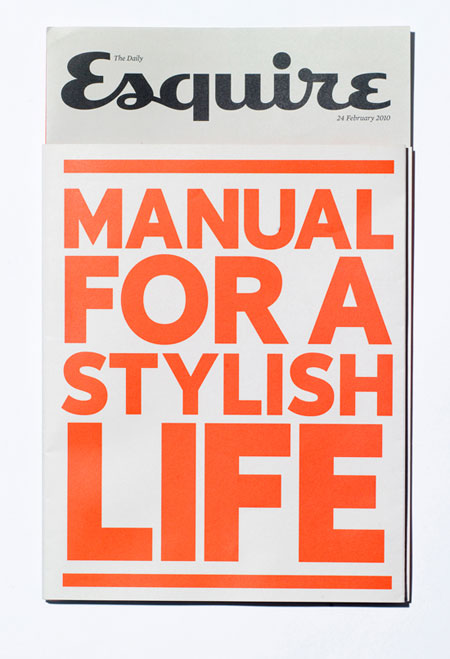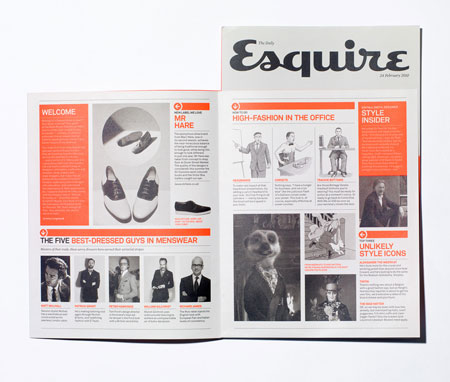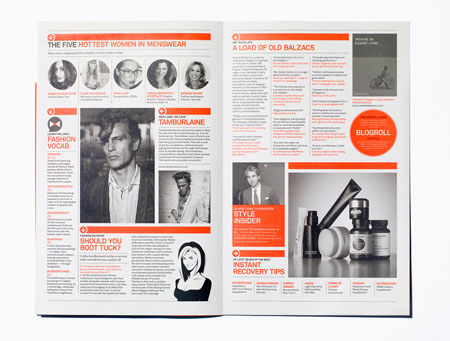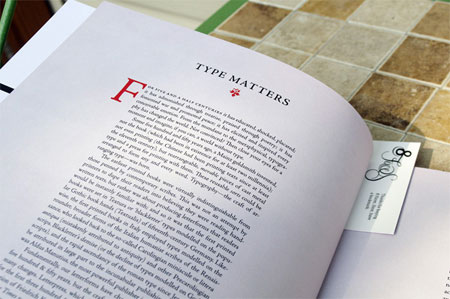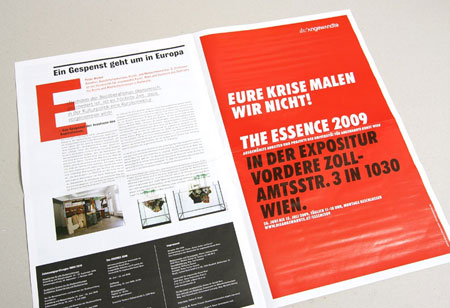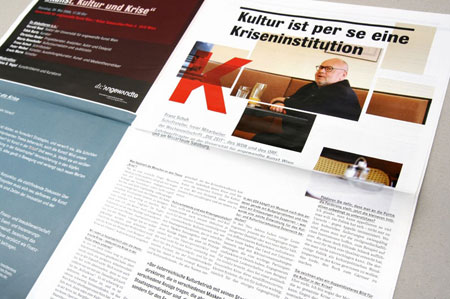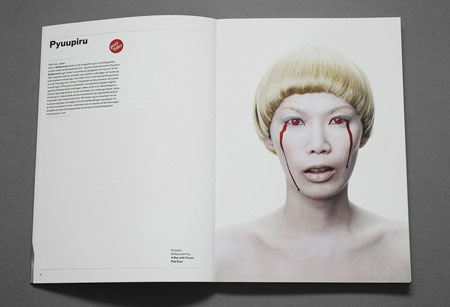Notions of censorship and truth
The indexical qualities of photography in rendering truth
Photographic manipulation and the documentation of truth
Censorship in advertising
Censorship in art and photography
Health warning!
- Ansel Adams, Moonrise HernandesNew Mexico, c. 1941 - 2
- Ansel Adams, Moon over Half Dome, 1960
- Ansel Adams, Aspens
- ‘Five years before coming to power in the 1917 October revolution, the Soviets established the newspaper Pravda. For more than seven Decades,until the fall of Communism, Pravda, which Ironically means “truth”, served the Soviet Communist party by censoring and filtering the news presented to Russian and Eastern Europeans’. - Aronson, E. and Pratkanis, A., 1992, Age of Propaganda: The Everyday Use and Abuse of Persuasion, New York, Henry Holt & Co., pages 269 - 270
- Stalin with, and without, Nikolai Yezhov
- Stalin with, and without, Trotsky
- http://homegame.org/news/
- Kate Winslet on cover of GQ Magazine, with legs elongated in photoshop
- Robert Capa, Death of a Loyalist Soldier, 1936
- ‘At that time [World War II], I fervently believed just about everything I was exposed to in school and in the media. For example, I knew that all Germans were evil and that all Japanese were sneaky and treacherous, while all white Americans were clean-cut, honest, fair-minded, and trusting’ - Elliot Aronson in Pratkanis and Aronson, (1992), Age of Propaganda, p. xii
- ‘With lively step, breasting the wind, clenching their rifles, they ran down the slope covered with thick stubble. Suddenly their soaring was interrupted, a bullet whistled - a fratricidal bullet - and their blood was drunk by their native soil’ – caption accompanying the photograph in Vue magazine
- ‘With lively step, breasting the wind, clenching their rifles, they ran down the slope covered with thick stubble. Suddenly their soaring was interrupted, a bullet whistled - a fratricidal bullet - and their blood was drunk by their native soil’ – caption accompanying the photograph in Vue magazine - Tom L. Beauchamp, Manipulative Advertising, 1984
- ‘Whereas representation tries to absorb simulation by interpreting it as false representation, simulation envelops the whole edifice of representation as itself a simulacrum. These would be the succesive phases of the image:
- It is the reflection of a basic reality.
- It masks and perverts a basic reality.
- It masks the absence of a basic reality.
- It bears no relation to any reality whatever : it is its own pure simulacrum.’
- Jean Baudrillard, Simulacra and Simulations, 1981, in Poster, M. (ed.) (1988), Jean Baudrillard: Selected Writings, Cambridge, Polity Press, page 173
- ‘In the first case, the image is a good appearance: the representation is of the order of the sacrament. In the second, it is an evil appearance: of the order of malefic. In the third, it plays at being an appearance: it is of the order of sorcery. In the fourth, it is no longer in the order of appearance at all, but of simulation’.
- Jean Baudrillard, Simulacra and Simulations, 1981, in Poster, M. (ed.) (1988), Jean Baudrillard: Selected Writings, Cambridge, Polity Press, page 173
- ‘As we approach the likelihood of a new Gulf War, I have an idea and it occurs to me that the Digital Journalist may be the place for it. As we all know, the military pool system created then was meant to be, and was, a major impediment for photojournalists in their quest to communicate the realities of war (This fact does not diminish the great efforts, courage, and many important images created by many of my colleagues who participated in these pools.). Aside from that, while you would have a very difficult time finding an editor of an American publication today that wouldn't condemn this pool system and its restrictions during the Gulf War, most publications and television entities more or less bought the program before the war began (this reality has been far less discussed than the critiques of the pools themselves)’ Peter Turnley, The Unseen Gulf War, December 2002, at http://digitaljournalist.org/issue0212/pt_intro.html
- ‘I refused to participate in the pool system. I was in the Gulf for many weeks as the build-up of troops took place, and then sat out the "air war", and flew from Paris to Riyadh as soon as the ground war began. I arrived at the "mile of death" the morning the day the war stopped. It was very early in the morning and few other journalists were present. When I arrived at the scene of this incredible carnage, strewn all over on this mile stretch were cars and trucks with wheels still turning, radios still playing, and there were bodies scattered along the road. Many people have asked the question "how many people died" during the war with Iraq and the question has never been well answered. That first morning, I saw and photographed a U.S. Military 'graves detail' bury in large graves many bodies’. Peter Turnley, The Unseen Gulf War, December 2002, a http://digitaljournalist.org/issue0212/pt_intro.html
- ‘I don't recall seeing many television images of the human consequences of this scene, or for that matter many photographs published. A day later, I came across another scene on an obscure road further north and to the east where, in the middle of the desert, I found a convoy of lorries transporting Iraqi soldiers back to Baghdad, where clearly massive fire power had been dropped and everyone in sight had been carbonized. Most of the photographs I made of this scene have never been published anywhere and this has always troubled me’. Peter Turnley, The Unseen Gulf War, December 2002, at http://digitaljournalist.org/issue0212/pt_intro.html
- ‘As we approach the distinct possibility of another war, a thought comes to mind. The photographs that I made do not, in themselves, represent any personal political judgment or point of view with respect to the politics and the right or wrong of the first Gulf War. What they do represent is a part of a more accurate picture of what really does happen in war. I feel it is important and that citizens have the right to see these images. This is not to communicate my point of view, but so viewers as citizens can be offered a better opportunity to consider the whole picture and consequences of that war and any war. I feel that it is part of my role as a photojournalist to offer the viewer the opportunity to draw from as much information as possible, and develop his or her own judgment’. Peter Turnley, The Unseen Gulf War, December 2002, at http://digitaljournalist.org/issue0212/pt_intro.html
- The "Mile of Death". During the night of the 25th of February and the day of the 26th of February, 1991, Allied aircraft strafed and bombed a stretch of the JahraHighway. A large convoy of Iraqis were trying to make a haste retreat back to Baghdad, as the Allied Forces retook Kuwait City. Many Iraqis were killed on this highway. Estimates vary on the precise number of Iraqis killed during the Gulf War. Very few images of Iraqi dead have been previously published http://images.google.co.uk/imgres?imgurl=http://www.digitaljournalist.org/issue0212/images/turnley/4.jpg&imgrefurl=http://www.digitaljournalist.org/issue0212/pt04.html&h=416&w=600&sz=73&hl=en&start=14&tbnid=q7UTOAeq6DxWGM:&tbnh=94&tbnw=135&prev=/images%3Fq%3Dgulf%2Bwar%2B%2Bconvoy%26gbv%3D2%26hl%3Den
- “It is a masquerade ofInformation: branded faces delivered over to the prostitution of the image” - Jean Baudrillard, The Gulf War Did not Take Place, 1995, p.40
- ‘The claim that the Gulf War of 1990 would not take place (1991), followed by the assertion that it did not take place, seems to defy all logic. Such statements are anticipated by the earlier claim (1983) that the only future war would be a hyperreal and dissuasive war in which no events would take place because there was no more space for actual warfare. The underlying argument is that the Gulf War was a simulated war or a reproduction of a war. Whatever its human consequences, this was, for Baudrillard, a war which consisted largely of its self-representation in the real time of media coverage’ Macey, D. (2000), The Penguin Dictionary of Critical Theory, London, Penguin, page 34
- ‘It is the de-intensified state of war, that of the right to war under the green light of the UN and with an abundance of precautions and concessions. It is the bellicose equivalent of safe sex: make war like love with a condom! On the Richter scale, the Gulf War would not even reach two or three. The build up is unreal, as though the fiction of an earthquake were created by manipulating the measuring instruments’. - Jean Baudrillard, The Gulf War Did Not Take Place, 1995, in Poster, M. (ed.) (1988), Jean Baudrillard: Selected Writings, Cambridge, Polity Press, page 233
- ‘A carbonized Iraqi soldier, killed by Allied aircraft, as a convoy of Iraqi soldiers tried to retreat to Baghdad from Kuwait City at the end of the Gulf War. The scene of this photograph was on a highway that was to the northeast of Kuwait City’. Peter Turnley, 1991
- ‘A US Military graves detail buries the bodies of dead Iraqi soldiers killed along the Mile of Death, on the road between Kuwait City and Basra, north of Kuwait City’. Peter Turnley, 1991
- ‘A few days after the end of the Gulf ground war, an American soldier looks at a dead Iraqi soldier lying in the desert near where his convoy of vehicles was bombed and strafed by Allied aircraft as the convoy attempted to retreat from Kuwait back to Iraq. This was a different and much less exposed convoy that was bombed, from the Mile of Death. This convoy was on an obscure road to the north and east of Kuwait City. This attack left most of the Iraqi soldiers in the convoy carbonized and their bodies were buried by Allied Forces at the end of the war’. Peter Turnley, 1991
- Peter Turnley, 1991
- ‘Most of the reporting that reached American audience and the west in general emanated from the Pentagon, hence severely lacking balance, as proven by the total blackout on the magnitude of the devastation and death on the Iraqi side. A quick statement of the number of dead (centeredaround 100,000 thousands soldiers and 15,000 civilians) sufficed for main-stream media audience. It is no wonder that this made-for-TV war started at 6:30pm EST on January 16, 1991, coinciding with National News. Alas, much of American audience today cannot distinguish between computer war games and real war, between news and entertainment’. http://www.radioislam.org/historia/zionism/index_iraq.html
- ‘Two intense images, two or perhaps three which all concern disfigured forms or costumes which correspond to the masquerade of this war: the CNN journalists with their gas masks in the Jerusalem studios; the drugged and beaten prisoners repenting on the screen of Iraqi TV; and perhaps that seabird covered in oil and pointing its blind eyes to the Gulf sky. It is a masquerade of information: branded faces delivered over to the prostitution of the image, the image of an unintelligible distress. No images of the field of battle, but images of masks, of blind or defeated faces, images of falsification. It is not war taking place over there but the Disfiguration of the world’ Jean Baudrillard, The Gulf War Did Not Take Place, 1995, in Poster, M. (ed.) (1988), Jean Baudrillard: Selected Writings, Cambridge, Polity Press, page 241
- An-My Le, Small Wars
- An-My Le, 29 Palms: MechanisedAttack
- Censorship
- The practice or policy of censoring films, letters, or publications - Treffry, D. (ed.) (2001), Paperback English Dictionary, Glasgow: Harper Collins
Censor
- 1.A person authorised to examine films, letters, or publications, in order to ban or cut anything considered obscene or objectionable
- 1.To ban or cut portions of (a film, letter or publication)
- Treffry, D. (ed.) (2001), Paperback English Dictionary, Glasgow: Harper Collins
- Morals
- Principles of behaviour in accordance with standards of right and wrong
- Treffry, D. (ed.) (2001), Paperback English Dictionary, Glasgow: Harper Collins
- Ethics
- 1.A code of behaviour, especially of a particular group, profession or individual.
- 1.The moral fitness of a decision, course of action etc.
- 1.The study of the moral value of human conduct.
- Treffry, D. (ed.) (2001), Paperback English Dictionary, Glasgow: Harper Collins
- ‘Everybody everywhere wants to modify, transform, embellish, enrich, and reconstruct the world around him – to introduce into an otherwise harsh or bland existence some sort of purposeful and distorting alleviation’
- Theodore Levitt, The Morality (?) of Advertising, 1970 ‘Suppose that a picture of a young woman inserting chocolate bar into her mouth makes one person think of fellatio, but someone else says that this meaning says more about the observer than it does the picture. This kind of dispute, with its assumption that meaning resides in a text quite independently of individual and group preconceptions, is depressingly common in discussions on advertising
- Cadbury’s Flake, 1969
- … as the picture does not in fact depict fellatio, but something else, what the dispute comes down to is whether everyone, a substantial number of people, a few obsessed individuals, or one particular person, understand it this way. Without an opinion poll, the dispute is unresolvable, but it is really quite improbable that such an interpretation will be individual’
- ‘While the publicity generated by such campaigns [Benetton] is immense – and their globalized distribution protects them from the effects of a ban in any one country – it is also surely shocking that the shock effect wears off so quickly. Perhaps the overall driving motive of such campaigns is in fact nothing new – but simply an astute loyalty to one of the oldest adages in the business: there is no such thing as bad - Publicity’ Cook, G. (1992), The Discourse of Advertising, London, Routledge, page 229
- Benetton (UK) Ltd: The ASA deemed this 1991 poster to be a poor reflection on the advertising industry and ordered the advertisers not to repeat the approach.
- “Decorative models do seem to increase recognition and recall of the advertisement itself. The same probably is true for nudity. Thus , as one article on that technique suggested, ‘While an illustration of a nude female may gain the interest and attention of a viewer, an advertisement depicting a nonsexual scene appears to be more effective in obtaining brand recall”’.
- Opium advertisement, photographer Stephen Meisel, 2000
- Christopher Graham, ASA director general, said: "This was the most complained about advertisement in the last five years. As a poster it clearly caused serious and widespread offence." He said it was sexually suggestive and likely to cause "serious or widespread offence" thereby breaking the British codes of advertising and sales promotion.
- Opium advertisement, photographer Stephen Meisel, 2000
- Agnolo Bronzino, Venus, Cupid, Folly and Time, c. 1545, Oil on wood
- Balthus, The Golden Years, c. 1945
- Therese Dreaming, 1938
- Edouard Manet(1832 - 83), Dejeuner surl’Herbe, 1863
- Andy Earl, Bow Wow Wowrecord cover, 1980
- Amy Adler – The Folly of Defining ‘Serious’ Art
- •Professor of Law at New York University
- •‘an irreconcilable conflict between legal rules and artistic practice’
- •The requirement that protected artworks have ‘serious artistic value’ is the very thing contemporary art and postmodernism itself attempt to defy
- The Miller Test, 1973
- •Asks three questions to determine whether a given work should be labelled ‘obscene’, and hence denied constitutional protection:
- •Whether ‘the average person, applying contemporary community standards’ would find that the work, taken as a whole, appeals to the prurient interest
- •Whether the work depicts or describes, in a patently offensive way, sexual conduct
- •Whether the work, taken as a whole, lacks serious literary, artistic, political or scientific value
- Obscenity Law
- •‘To protect art whilst prohibiting trash’
- •‘The dividing line between speech and non-speech’
- •‘The dividing line between prison and freedom’
- Sally Mann, Candy Cigarette, 1989
- Sally Mann, Immediate Family, 1984 - 92
- Sally Mann, Immediate Family, 1984 - 92
- Tierney Gearon, Untitled 2001
- ‘Upper crust “art lovers” are paying £5 a head to ogle degrading snaps of children plastered across the walls of one of Britain’s most exclusive galleries’
- ‘A revolting exhibition of perversion under the guise of art’
- News of the World
- Tierney Gearon, Untitled 2001
- •Deems the making, possession, distribution and display of indecent pictures of children an offence
- •Up to ten years in jail
- Tierney Gearon, Untitled 2001
- ‘I think that the pictures are incredibly innocent and totally unsexual. I don’t crop them, I don’t retouch them and the shots are never staged. I might introduce an element like a mask, to a given situation, but I would never insist that the child put it on’
- Tierney Gearon, Guardian, 2001
- Nan Goldin Klaraand EddaBelly-dancing,1998
- Richard Prince, Spiritual America, 1983 (after Garry Gross)‘A body with two different sexes, maybe more, and a head that looks like it’s got a different birthday’
- Richard Prince
- ‘A bath-damp and decidedly underage Brooke Shields … when Prince invites us to ogle Brooke Shields in her prepubescent nakedness, his impulse has less to do with his desire to savour the lubricious titillations that it was shot to spark in its original context … than with a profound fascination for the child star’s story’
- Jack Bankowsky, co-curator, Tate Modern
- Spiritual America, as censored in Tate’s Pop Life exhibition catalogue
- Richard Prince, Spiritual America IV, 2005
Final Thoughts
- Just how much should we believe the ‘truth’ represented in the media?
- •And should we be protected from it?
- •Is the manipulation of the truth fair game in a Capitalist, consumer society?
- •Should art sit outside of censorship laws exercised in other disciplines?
- •Who should be protected, artist, viewer, or subject?
Further Reading
Aronson, E. and Pratkanis, A., 1992, Age of Propaganda: The Everyday Use and Abuse of Persuasion, New York, Henry Holt & Co.
Baudrillard, Simulacra and Simulations, 1981, in Poster, M. (ed.) (1988), Jean Baudrillard: Selected Writings, Cambridge, Polity Press Jean Baudrillard, The Gulf War Did Not Take Place, 1995, in Poster, M. (ed.) (1988), Jean Baudrillard: Selected Writings, Cambridge, Polity Press Hawthorne C. and Szanto, A. (eds.) (2003) The New Gatekeepers: Emerging Challenges to free expression in the Arts, New York, Columbia University Arts Journalism Program Naas M. (2010) The Truth in Photography, Edinburgh, Edinburgh University Press










